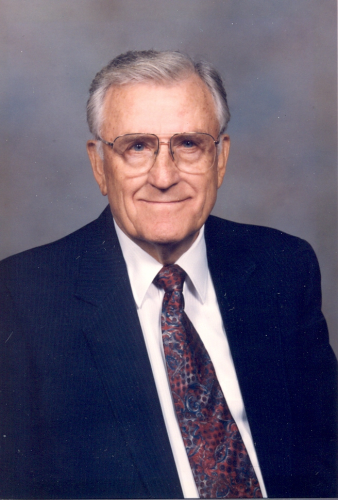
Born 20 December, 1920 in Saint Marys, Pennsylvania, Norb Arnold spent his whole life there, apart from his military service in WWII. He was a self-taught engineer who will be remembered in the industry for his many inventions and developments.
On leaving high school in 1939, Norb Arnold won a scholarship to the International Correspondence School in industrial and analytical chemistry and joined Keystone Carbon Company (now Keystone Powdered Metal Company) as a laboratory technician. In the early part of the WWII he was member of a team at Keystone that developed an essential part of the Proximity Fuse for the US Navy, the Nickel Cup.
From 1944 to 1946, Norb served in the 4th Marine Division, fighting in the fierce battle of Iwo Jima. On returning to Keystone after the war, he was made chief chemist/chief metallurgist, becoming manager of powder metal engineering in 1961. He retired from Keystone on 31 December, 1985, and in 1986 he formed Arnold P/M Consulting Services. In the early 90s, he assisted with the design and set up of a PM laboratory at the DuBois Campus of Penn State University and the development of related continuing education courses.
Creating standards
Norb Arnold had numerous accomplishments throughout his 50+ year career in the PM industry, including authoring several standards for the industry. When Keystone began making PM bearings in 1939, it was difficult to measure the density of the compacted or sintered parts. Norb developed a method using Archimedes Principle that became an industry standard (ASTM Standard B328, and MPIF Standard 42).
After returning to Keystone in 1946, he developed the Keystone Sampling Thief, an auger type instrument used for obtaining representative samples of metal powder product in a powder barrel or packaging container. This was adopted as Method B of MPIF Standard 01 and Practice B of ASTM Standard B215. In 1953, Norb developed the Arnold Density Meter. This device duplicates the action of the fill shoe on a powder compacting press and measures the apparent density of a metal powder. It is also used for measuring the volumetric flow rate and is claimed as the easiest and most practical method for these tests. The Arnold Meter is covered by ASTM Standards B703 and B855, as well as MPIF Standard 48.
Prealloyed powder
1n 1952 Keystone was interested in obtaining higher mechanical properties than could be achieved with elemental powders. A programme was initiated with Vanadium Alloy Steel Company which was interested in making prealloyed steel powder. Norb Arnold, as Keystone's chief metallurgist, headed this project; and by 1955, Keystone was in full production of high strength gears for the hydraulic pump industry. Norb also pioneered the introduction of turbine oils and later synthetic oils in the production of oil-impregnated PM bearings.
In the mid to late 60’s, he headed the development of the first PM automotive parking gear and pressure plates, which were the first of millions to be manufactured by Keystone for use by the major automotive companies. He was awarded the Distinguished Service to Powder Metallurgy award in 1979 by MPIF; ASTM’s Silver Certificate in recognition of 25 years of continuous membership and valuable contributions to the society (1983); the Award of Merit and Honorary Title of Fellow (1985) from ASTM for exceptional contributions in the development of specialized testing equipment and part specifications, and in 2001 the Fifty Years of Service award by the American Chemical Society.
Family life
Norb was an avid golfer. He was the St. Marys Country Club Golf Champion in 1957 and served as the Chairman of its Greens Committee. He was also instrumental in establishing the greens at the Bavarian Hills Golf Course. Norb was also involved in the community. He was a founding member of the Saint Marys Servicemen’s Burial Detail; served on the hospital board; and the United Way. He was also very active in the Catholic School System. He was a member of the Knights of Columbus, CMF, YMCA, and numerous professional organizations. Although proud of his service and accomplishments, he was most proud of his family. He is survived by his second wife Grace, 12 children, 34 grandchildren and 17 great-grandchildren.
Written with contributions from the Arnold family and long-time colleague Victor Straub, consultant, Keystone Powdered Metal Company.






